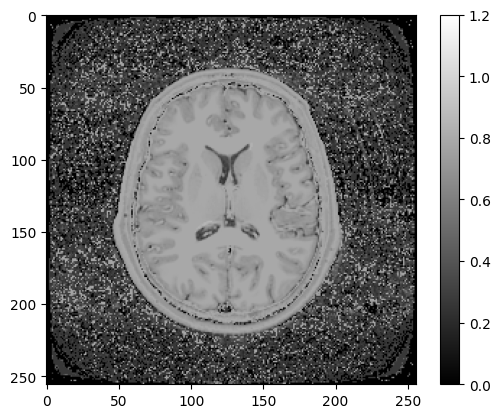(TI = 3 s)¶
CORRECT ANSWER¶
You got the correct answer!
You selected a TI of 3 s. Here is what an inversion recovery image with this TI would look like:

Figure 7.6:Inversion recovery image with TI = 3 s, TR = 5 s, TE = 15 ms, FA = 90 degrees
As you can see, ventricles are quite dark, meaning this TI nulls the ventricular signal. This is clearly deduced from Figure 2.3 by hovering the cursor over the white matter signal where it crosses 0. Here are the simulated images for the three other answers: Figure 7.3, Figure 7.4, and Figure 7.5.
Now, despite knowing the correct inversion time, we still can’t see the lesions from Figure 7.6. We need to add T2 weighting to this inversion recovery image. What protocol should we use?
A - (TI = 3 s, TR = 10 s, TE = 150 ms, FA = 90 deg)
B - (TI = 3 s, TR = 5 s, TE = 15 ms, FA = 20 deg)